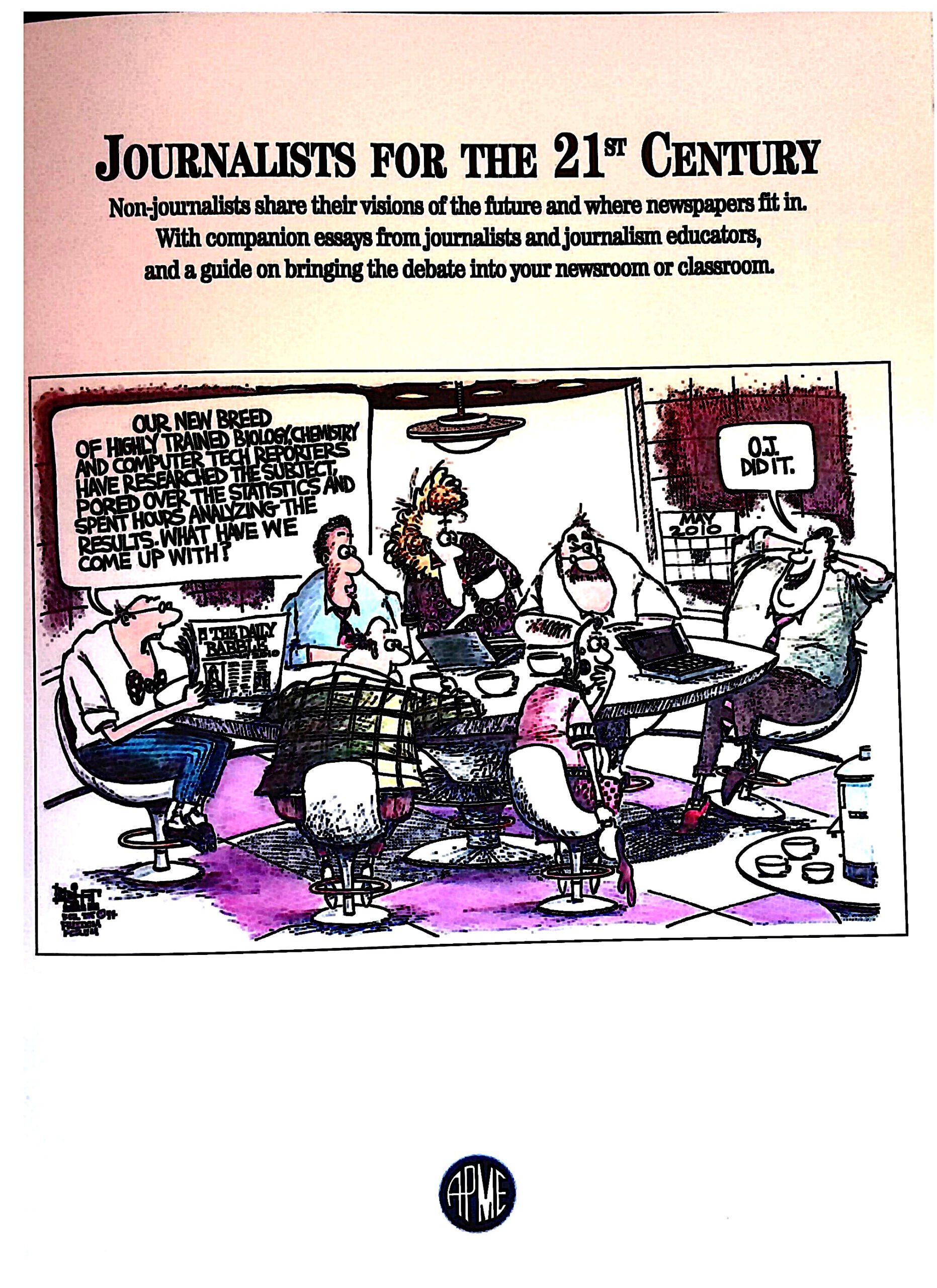1994

 asne 1994 future of journalists in 21st century
asne 1994 future of journalists in 21st century
Future of Journalists in 21st Century ( via 1994)
In 1994, the American Society of News Editors (ASNE) in partnership with the Freedom Forum provided a report on journalism’s evolution into the 21st century. The document contains insights regarding the anticipated transformations within the industry, particularly in response to technological advancements and shifting audience behaviors. However, some projections were either only partially realized or did not materialize as expected.
Key Insights the Report
- Digital Transformation & the Internet
The report correctly foresaw the growing importance of digital platforms, predicting that online news consumption would reshape journalism. It acknowledged the potential of the internet to expand access to news and create new journalistic formats.- Ethical Challenges & Credibility Concerns
There was a strong emphasis on maintaining journalistic integrity in an increasingly fragmented media landscape. Concerns about misinformation, the speed of news dissemination, and editorial responsibility were highlighted—issues that have become even more pronounced in today’s digital age.- Changing Audience Expectations
The report predicted a shift in audience engagement, recognizing that readers would demand more interactivity, customization, and multimedia elements in their news consumption.- Corporate Ownership & Commercial Pressures
There was an awareness of the growing consolidation of media ownership and the risks of editorial independence being compromised due to commercial interests.
Assumptions That Did Not Materialize
Just as interesting as to the insights, were the assumptions that did not come to pass.
- Sustained Dominance of Print Media
While the report acknowledged the rise of digital media, it underestimated the rapid decline of traditional print journalism. It assumed newspapers would remain a primary news source, supplemented by digital rather than largely replaced by it.- Public Willingness to Pay for Quality Journalism
The expectation that consumers would sustain journalism through paid subscriptions proved only partially correct. While paywalls and digital subscriptions exist, the widespread reliance on free content and advertising-based models was not fully anticipated.- Journalists as Gatekeepers of Information
The document maintained the assumption that professional journalists would retain their role as the primary arbiters of truth. However, the rise of citizen journalism, social media influencers, and decentralized news distribution has significantly altered the landscape.- The Role of Traditional News Organizations in Shaping Public Discourse
While legacy media outlets were expected to remain central to public discourse, they now compete with a vast array of alternative news sources, many of which operate outside traditional journalistic norms.
The summary was produced using ChatGPT and reviewed by a human [Howard Finberg].

 asne 1994 future of journalists in 21st century
asne 1994 future of journalists in 21st century